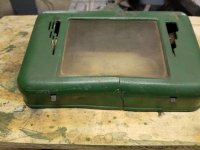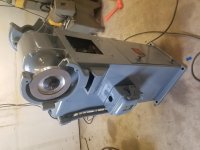Restoring an old Hammond Dustless grinder that had been damaged in the past. One of the light housings is cracked and I'm looking for suggestions for the repair. Its functional, but I would like to fix if possible.
I have a TIG machine. Not sure if this is best or not, especially since the metal is thin and I'm still learning the art of TIG welding. Thought about JB weld or brazing...
Any suggestions?
gm.
Click image for larger version.

I have a TIG machine. Not sure if this is best or not, especially since the metal is thin and I'm still learning the art of TIG welding. Thought about JB weld or brazing...
Any suggestions?
gm.
Click image for larger version.






